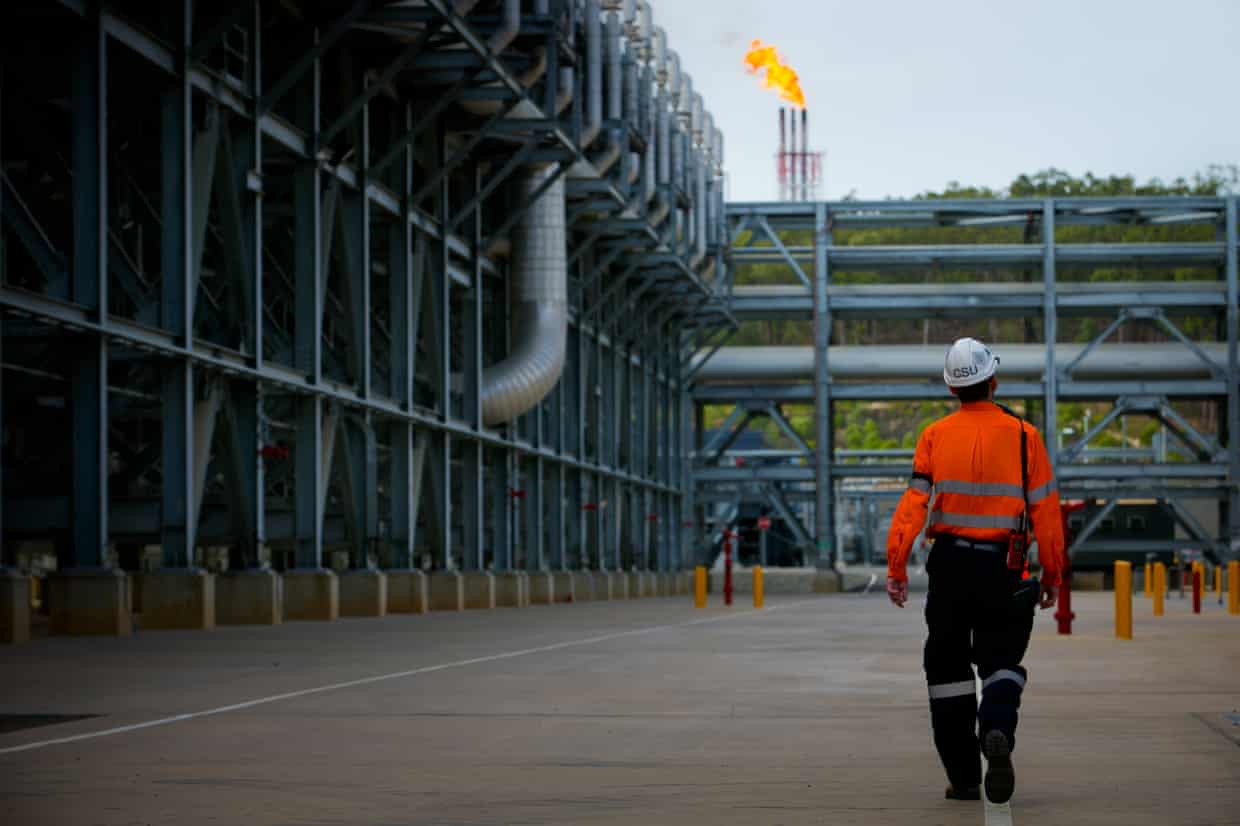‘It’s hell for us here’: Mumbai families suffer as datacentres keep the city hooked on coal

As Mumbai sees increased energy demand from new datacenters, particularly from Amazon, the filthiest neighbourhood in one of India’s largest cities must keep its major coal plantsEach day, Kiran Kasbe drives a rickshaw taxi through his home neighbourhood of Mahul on Mumbai’s eastern seafront, down streets lined with stalls selling tomatoes, bottle gourds and aubergines–and, frequently, through thick smog.Earlier this year, doctors found three tumours in his 54-year-old mother’s brain.It’s not clear exactly what caused her cancer.But people who live near coal plants are much more likely to develop the illness, studies show, and the residents of Mahul live a few hundred metres down the road from one.Mahul’s air is famously dirty.
Even behind closed car windows, there is a heavy stench of oil and smoke,“We are not the only ones facing health challenges in the area,” said Kasbe, who is 36,“It’s all covered with filth,”Two coal plants plant run by the Indian multinationals Tata Group and Adani were due to close last year in a government push to cut emissions,But late in 2023, those decisions were reversed after Tata argued that electricity demand was rising too fast for Mumbai to go without coal.
Neither company responded to requests for comment,Economic growth and the need for air conditioning in climate change-linked extreme heat have seen India’s electricity demand soar in recent years,But an investigation by SourceMaterial and the Guardian reveals the biggest single factor in the city’s failure to end its dependence on fossil fuels: energy-hungry datacentres,Leaked records also reveal the scale of the presence of the world’s biggest datacentre operator, Amazon, in Mumbai,In the city’s metropolitan area, Amazon, on its website, records three “availability zones”, which it defines as one or more datacentres.
Leaked records from last year seen by SourceMaterial from inside Amazon reveal the company used 16 in the city.As India transforms its economy into a hub for artificial intelligence, the datacentre boom is creating a conflict between energy demand and climate pledges, said Bhaskar Chakravorti, who researches technology’s impact on society at Tufts University’s Fletcher School.“I’m not surprised they’re falling behind their green transition commitments, especially with the demand growing exponentially,” he said of the Indian government.Kylee Yonas, a spokeswoman for Amazon, said Mumbai’s “emission challenges” were not caused by Amazon.“On the contrary – Amazon is one of the largest corporate investors in renewable energy in India, and we’ve supported 53 solar and wind projects in the country capable of generating over 4m megawatt hours of clean energy annually,” she said.
“These investments, which include our 99 megawatt wind project in Maharashtra, are enough to power over 1.3m Indian homes annually once operational.”Amazon is building hundreds of datacentres around the world as it vies with Microsoft, Google and others for leadership of the booming AI market.The company is failing to take responsibility for its role in prolonging the use of the most polluting energy sources, said Eliza Pan, a spokeswoman for Amazon Employees for Climate Justice.“Amazon is using the shiny thing of AI to distract from the fact that it’s building a dirty energy empire,” she said.
Yonas denied this, saying: “Not only are we the leading datacentre operator in efficiency, we’re the world’s largest corporate purchaser of renewable energy for five consecutive years with over 600 projects globally.”Amazon’s claims on green energy are controversial: the company has been criticised for using “creative accounting” by buying renewable energy certificates alongside direct purchases of green energy, as described by a member of Amazon Employees for Climate Justice.Mahul, where Kasbe drives his rickshaw, is a former fishing village now home to tens of thousands of people who moved there after slum clearances elsewhere in the city.Kasbe and his mother arrived there in 2018 after their home in the suburb of Vidyavihar was bulldozed.She had been healthy before the move but deteriorated rapidly until eventually she was diagnosed with brain cancer, he said.
Gajanan Tandle, who lives nearby, said pollution-linked illnesses were common.“There are so many cases of skin and eye irritation, cancer, asthma, TB and more, and no assistance from the government,” he said.Another local, Santosh Jadhav, has lobbied the government to move people away from Mahul.“Everything is contaminated.We are tired of fighting for a decent means of living,” he said.
“It’s hell for us here.”Amazon, an online marketplace that processes 13 million customer purchases each day, according to research by CapitalOne, has bet billions of dollars on an expansion of its lucrative cloud computing business and expansion of AI-assisted services, from automated coding to translation.Sign up to TechScapeA weekly dive in to how technology is shaping our livesafter newsletter promotionThe reason so many of its Mumbai centres have slipped under the radar is that they are leased rather than owned by the company.Whereas in the US Amazon tends to own its facilities outright, elsewhere it often rents either entire data farms or server racks in centres shared with other companies.Shared “colocation” units account for a larger increase in datacentre energy use worldwide than owned or wholly leased, according to Shaolei Ren, a computing specialist at the University of California, Riverside.
“Most of the energy in the datacentre industry is going into colocations,” he said.“They are everywhere.”Amazon’s Mumbai colocation datacentres used 624,518 megawatt hours of electricity in 2023, enough to power over 400,000 Indian households for a year, the leaked data shows.India is poised to overtake Japan and Australia to become the second-largest user of datacentre electricity in the Asia-Pacific region, S&P has forecast.By 2030, datacentres will consume a third of Mumbai’s energy, according to Ankit Saraiya, chief executive of Techno & Electric Engineering, an Indian power infrastructure supplier.
As it scrambles to keep ahead of demand for power, the state government of Maharashtra has extended the life of Tata’s coal plant in Mahul by at least five years.At the same time, it also postponed the shutdown of a 500-megawatt station operated by Tata’s rival, Adani Group, north of the city.When Tata argued for the extension in a petition to the state energy board, the biggest single factor the company cited was increased energy demand from datacentres.Adani said most anticipated new demand in the five years after the date by which its station was due to close would be from datacentres.The power stations are just two of many polluters in Mumbai’s Mahul district.
The area is also home to three refineries and 16 chemical factories, according to a 2019 report published by India’s Centre for Policy Studies which called the neighbourhood a “toxic hell”.But the Tata station, opened in 1984 and like other older power stations subject to laxer emissions rules, is “one of the key sources of air pollution in Mumbai”, according to Raj Lal, chief air quality scientist at the World Emission Network.It contributes nearly a third of local PM2.5 pollution, according to the Centre for Research on Energy and Clean Air.PM2.
5 refers to airborne particles 2.5 micrometers or less in diameter that can cause significant health problems when inhaled.Toxic heavy metals in coal ash from the plant are likely to cause “respiratory diseases, kidney issues, skin problems, cardiac issues”, said Shripad Dharmadhikary, founder of the environmental organisation Manthan Adhyayan Kendra.Even with the Tata plant kept running, Mumbai’s power grid is creaking under the strain of surging demand.To guard against blackouts, Amazon’s colocation datacentres in the city have bought 41 diesel generators as backup and are asking for approval to install more, documents show.
In August a report by the Center for Study of Science, Technology and Policy (CSTEP) identified diesel generators as a major source of air pollution in the region,The presence of datacentres that require constant power and diesel generators for backup “will naturally exacerbate emissions”, said Swagata Dey, air quality specialist at (CSTEP), asserting that datacentre operators should be required by law to power them with pollution-free solar electricity,One Amazon site in particular, just across the Thane Creek from Mahul, hosts 14 generators,One of the company’s partners received permission earlier this year to install 12 further generators at the site,“Public health impacts must be a central consideration when siting datacenters and choosing energy sources,” said Ren of the University of California, Riverside, who co-wrote a recent paper assessing public health risk from diesel generators at US datacentres.
Sushmita does not use a surname because in India a surname indicates the caste–a hierarchical and discriminatory social structure,This story was produced with support from Internews’ Earth Journalism Network,

AI could replace 3m low-skilled jobs in the UK by 2035, research finds
Up to 3m low-skilled jobs could disappear in the UK by 2035 because of automation and AI, according to a report by a leading educational research charity.The jobs most at risk are those in occupations such as trades, machine operations and administrative roles, the National Foundation for Educational Research (NFER) said.Highly skilled professionals, on the other hand, were forecast to be more in demand as AI and technological advances increase workloads “at least in the short to medium term”. Overall, the report expects the UK economy to add 2.3m jobs by 2035, but unevenly distributed

‘It’s hell for us here’: Mumbai families suffer as datacentres keep the city hooked on coal
As Mumbai sees increased energy demand from new datacenters, particularly from Amazon, the filthiest neighbourhood in one of India’s largest cities must keep its major coal plantsEach day, Kiran Kasbe drives a rickshaw taxi through his home neighbourhood of Mahul on Mumbai’s eastern seafront, down streets lined with stalls selling tomatoes, bottle gourds and aubergines–and, frequently, through thick smog.Earlier this year, doctors found three tumours in his 54-year-old mother’s brain. It’s not clear exactly what caused her cancer. But people who live near coal plants are much more likely to develop the illness, studies show, and the residents of Mahul live a few hundred metres down the road from one.Mahul’s air is famously dirty

One in four unconcerned by sexual deepfakes created without consent, survey finds
One in four people think there is nothing wrong with creating and sharing sexual deepfakes, or they feel neutral about it, even when the person depicted has not consented, according to a police-commissioned survey.The findings prompted a senior police officer to warn that the use of AI is accelerating an epidemic in violence against women and girls (VAWG), and that technology companies are complicit in this abuse.The survey of 1,700 people commissioned by the office of the police chief scientific adviser found 13% felt there was nothing wrong with creating and sharing sexual or intimate deepfakes – digitally altered content made using AI without consent.A further 12% felt neutral about the moral and legal acceptability of making and sharing such deepfakes.Det Ch Supt Claire Hammond, from the national centre for VAWG and public protection, reminded the public that “sharing intimate images of someone without their consent, whether they are real images or not, is deeply violating”

Can’t tech a joke: AI does not understand puns, study finds
Comedians who rely on clever wordplay and writers of witty headlines can rest a little easier, for the moment at least, research on AI suggests.Experts from universities in the UK and Italy have been investigating whether large language models (LLMs) understand puns – and found them wanting.The team from Cardiff University, in south Wales, and Ca’ Foscari University of Venice concluded that LLMs were able to spot the structure of a pun but did not really get the joke.An example they tested was: “I used to be a comedian, but my life became a joke.” If they replaced this with: “I used to be a comedian, but my life became chaotic,” LLMs still tended to perceive the presence of a pun

Civil liberties groups call for inquiry into UK data protection watchdog
Dozens of civil liberties campaigners and legal professionals are calling for an inquiry into the UK’s data protection watchdog, after what they describe as “a collapse in enforcement activity” after the scandal of the Afghan data breach.A total of 73 academics, senior lawyers, data protection experts and organisations including Statewatch and the Good Law Project, have written a letter to Chi Onwurah, the chair of the cross-party Commons science, innovation and technology committee, coordinated by Open Rights Group, calling for an inquiry to be held into the office of the information commissioner, John Edwards.“We are concerned about the collapse in enforcement activity by the Information Commissioner’s Office, which culminated in the decision to not formally investigate the Ministry of Defence (MoD) following the Afghan data breach,” the signatories state. They warn of “deeper structural failures” beyond that data breach.The Afghan data breach was a particularly serious leak of information relating to individual Afghans who worked with British forces before the Taliban seized control of the country in August 2021

Meet the AI workers who tell their friends and family to stay away from AI
When the people making AI seem trustworthy are the ones who trust it the least, it shows that incentives for speed are overtaking safety, experts sayKrista Pawloski remembers the single defining moment that shaped her opinion on the ethics of artificial intelligence. As an AI worker on Amazon Mechanical Turk – a marketplace that allows companies to hire workers to perform tasks like entering data or matching an AI prompt with its output – Pawloski spends her time moderating and assessing the quality of AI-generated text, images and videos, as well as some factchecking.Roughly two years ago, while working from home at her dining room table, she took up a job designating tweets as racist or not. When she was presented with a tweet that read “Listen to that mooncricket sing”, she almost clicked on the “no” button before deciding to check the meaning of the word “mooncricket”, which, to her surprise, was a racial slur against Black Americans.“I sat there considering how many times I may have made the same mistake and not caught myself,” said Pawloski

The latest inflation figures offer no joy – except to the gas producers whose windfall profits remain largely untouched | Greg Jericho

UK borrowing costs fall after early release of budget forecasts – business live

Warner Music signs deal with AI song generator Suno after settling lawsuit

Pets at Home boss says ‘urgent and necessary’ action needed as profits dive

Reserve Bank could raise interest rates as early as May after inflation climbs to 3.8%

Joan Templeman, wife of billionaire Richard Branson, dies aged 80